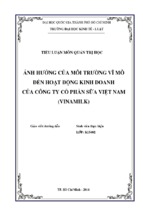130
ONLINE ADVOCACY
Increasing Prevalence of Web Forms versus Acceptance
of E-mail Submissions
Nonprofits should pay close attention to the shift by legislators to block e-mail and
instead force constituents to submit information via Web site forms. More members
of Congress are shifting from receiving constituent communications through e-mail
to relying on Web-based forms: 66 U.S. senators and 226 representatives are not
using public e-mail addresses, and are directing constituents to their Web sites to
send messages.10 The aim is to reduce spam from nonconstituents and automated
messages, and reduce the workload for internal staff. The challenge Web forms have
created for nonprofit groups is that almost every Web form is different, so automating message delivery is difficult. However, advanced online advocacy tools solve this
problem by automatically entering data into a legislator’s Web site in the correct format. This capability will become increasingly important to nonprofit organizations
to ensure effective message delivery (see Exhibit 10.9 for an example of a legislative
Web form used by the White House).
EXHIBIT 10.9
White House Legislative Contact Form
Source: https://sawho14.eop.gov/PERS?verified=1
Trends and Predictions
131
Measurement of Activist Participation, Segmentation,
and Moves Management
Most fundraisers actively measure or estimate the value of donors over their lifetime,
based on a calculation of their average gift size, giving frequency, and years of support
of the organization. Many fundraisers then group donors according to value segment
and target communications accordingly to advance their relationships and increase
donor value. Historically, advocacy functions have not measured the participation levels of individual activists en masse. Participation levels in a paper world are difficult
to measure. Early online tools tracked aggregate response but yielded little to no information about individual constituent response profiles. Consequently, it was not
very easy to actively advance advocate relationships through a sophisticated segmentation approach. New online advocacy and constituent relationship management
tools make measuring constituent engagement much easier. Such tools allow an administrator to assign different “scores” to advocacy-related activities—such as taking
action online, signing a petition or forwarding messages to friends—and correspondingly measure an advocate’s value. An organization then can use this information to
create segments for differentiated communication. The American Humane Association has recently started an engagement measurement and rewards program for its
activists. Every time an activist takes action, he or he accumulates points. This enables the association to track its best activists. Also it’s able to create rewards programs
to encourage higher response rates or other actions.
Divisions between Fundraising and Advocacy Will Be Eliminated
Some nonprofit organizations are starting to break down the barriers between advocacy and development for list sharing and constituent communications. Although
not every advocate wants to become a financial donor and vice versa, coordinating
advocacy and fundraising efforts makes inordinate sense, and modern, integrated
eCRM tools make that goal much easier to achieve. New approaches to measuring and
managing constituent relationships in an integrated fashion greatly aid in crossmarketing from advocacy to giving, and vice versa. Leading online constituent relationship management tools allow nonprofits to target messages to constituents based
on their profile (e.g., this person is a donor, but not yet an activist). New tools also
allow a group to measure constituent engagement in a holistic fashion, ascribing value
to both fundraising and advocacy contributions.
Increased Reliance on and Automation of Peer-to-Peer Marketing
Growing adoption of online grassroots advocacy has created a tremendous opportunity to reach new constituents and get them involved in supporting a cause. Viral marketing, which occurs when constituents distribute an organization’s messages to their
friends and relatives, is already having a big impact. As consumers become inundated
with electronic marketing messages and spam, expect to see more emphasis in this area
because a message from a friend is more likely to be read. Specialized tools are being
built to make it easier for activists to resend messages to their personal networks, and
recruit other activists. One of the best illustrations of this concept in action today is
actually a political example—the GOP Team Leader Web site by the Republican Party
132
ONLINE ADVOCACY
(see Exhibit 10.10). The Democratic National Committee also has developed a similar
capability called eCaptains. In both cases, the party rewards loyal activists with points
for outreach and actions, and they can redeem the points for party merchandise.
Building Activist Engagement through Community—
Online and Offline
Today’s progressive organizations are using the Internet to market to activists so they
will take action and contact their friends. Increasingly, organizations will create opportunities for activists to interact directly to build communities and more powerful
advocate networks. As activists have a chance to interact with each other through online community forums or physical meetings in the offline world, they become more
engaged and passionate. Political campaigns and advocacy groups such as Dean for
America and For Our Grandchildren, respectively, use online blogs, or online diaries,
(see Exhibit 10.11), to build community. Many groups also are encouraging their activists to coalesce in person through services like Meetup.com.
CONCLUSION
The Internet has already transformed online advocacy for many nonprofit organizations. New advancements in online technology are only pushing the potential further.
Nonprofit professionals in other functions aside from advocacy should not only be
EXHIBIT 10.10
GOP Team Leader Peer-to-Peer Marketing System
Source: http://www.gopteamleader.com/
133
Summary
EXHIBIT 10.11
Online Blog at For Our Grandchildren
supportive of the role of online advocacy within the organization, but also should
determine how to most effectively integrate efforts—key for maximizing the synergy
between functions and, in turn, constituent involvement. New online tools now make
the notion of measuring and managing constituent relationships in an integrated fashion (factoring advocacy and fundraising participation, for example) a real possibility.
134
ONLINE ADVOCACY
ABOUT THE AUTHOR
Vinay Bhagat, ePMT, is founder, chairman and chief strategy officer for Convio,
Inc. Before founding Convio, Vinay was director of e-commerce at Trilogy
Software where he shaped Fortune 500 customers’ thinking about developing
their Internet strategies, and was the product visionary for customers facing
e-commerce applications. Before Trilogy, Vinay was a consultant and team leader
at Bain & Company, the leading strategy consulting firm. Vinay graduated from
Harvard Business School with high distinction as a Baker Scholar. He holds an
MS from Stanford in Engineering-Economic Systems, and MA from Cambridge
University in Electrical and Information Sciences with first class honors. Vinay is
also a member of the Association of Fundraising Professionals and a frequent
speaker on eCommerce panels, and seminars on applying Internet technology to
nonprofits. You can e-mail Vinay at
[email protected].
ENDNOTES
1. Interview with Stephen McConnell, senior vice president, Advocacy and Public Policy,
Alzheimer’s Association (October 7, 2003).
2. Pew Internet and American Life Project, The Rise of the E-Citizen: How People Use Government Agencies’ Web sites, (April 3, 2002), http://www.pewinternet.org.
3. Interview with Carter Headrick, manager of Grassroots, Tobacco-Free Kids (October
2003).
4. Convio client data analysis—Million Mom March united with the Brady Campaign to
Prevent Gun Violence.
5. Convio client data analysis.
6. Convio client data analysis—regional advocacy/social services organization.
7. Michael Birkin, “Non-Profit Brands: Friend or Foe?” OnPhilanthropy.com newsletter
(February 7, 2003).
8. Sarah Durst, “Target Analysis Group—Benchmarking Trends in Nonprofit Giving,” Target Analysis Year 2000 Cross-Industry Study.
9. Pew Internet and American Life Project, The Rise of the E-Citizen: How People Use Government Agencies’ Web sites.
10. Ibid.
CHAPTER
11
Volunteer Recruitment
and Management
Alison Li, ePMT1
HJC New Media
he online environment provides a rich range of services and resources to augment
the volunteer recruitment and management activities of nonprofit organizations.
E-mail and the Web provide many opportunities to recruit, train, support, manage, and
recognize volunteers. Online tools are not just supplementing traditional methods of
interacting with volunteers, however; they are challenging organizations to expand
their conception of volunteers and volunteering activity.
Volunteer managers can now find a wealth of online resources and services to support their work. Leading nonprofit organizations are not only using Internet tools to
make existing volunteering programs more effective, but are developing innovative
ways of reaching new constituencies and creating new forms of volunteer endeavor.
An organization’s Web site is now often its first point of contact with members of the
public, and is, therefore, an important means of reaching potential volunteers. A first
step many organizations take in using their Web sites to foster volunteering is to provide an online form allowing visitors to offer to volunteer. Prospective volunteers can
indicate their skills and interests as well as availability. Organizations can also post descriptions of specific volunteer opportunities.
Nonprofits, however, can use the Web environment to go much further in connecting with prospective volunteers by vividly portraying what the volunteer experience might be like, from the sights and sounds these volunteers might encounter, to
the social and emotional challenges they’ll face. The Global Citizens for Change Web site
(http://www.citizens4change.org/virtual_tour.htm) provides personal stories and a virtual tour to help prospective volunteers understand what it might be like to serve overseas in a developing country (see Exhibit 11.1). The virtual tour helps interested visitors
explore how they might prepare for their volunteer service and to consider how they
might feel coming home after living abroad.
T
ONLINE VOLUNTEER MATCHING
A very significant development in volunteer recruitment is the growth of online volunteer matching services. These services allow organizations to reach new prospective supporters beyond their usual geographic borders, and open up a wider range of
135
136
EXHIBIT 11.1
VOLUNTEER RECRUITMENT AND MANAGEMENT
Global Citizens for Change Web Site, Virtual Tour
Source: http://www.citizens4change.org/virtual_tour.htm (March 28, 2004).
possibilities to interested volunteers. Organizations can post information about their
missions and volunteer needs. Prospective volunteers can search for opportunities by
name of organization, location, mission, or other criteria. For example, in the United
States, Youth Service America’s SERVEnet program provides a large database of more
than 6,000 registered nonprofit organizations, 35,000+ service projects and more than
52 million volunteer opportunities available. At the SERVEnet site, prospective volunteers can enter their ZIP code, city, state, skills, interests, and availability and be
matched with organizations needing help (see Exhibit 11.2). Visitors can also search for
calendar events, job openings, service news, recommended books, and best practices.2
There are several well-established online volunteer matching services at the local,
national, and international levels. These services include Action Without Borders,
www.idealist.org (United States); VolunteerMatch, www.volunteermatch.org (United
States); the Australian Volunteer Search, www.volunteersearch.gov.au (Australia);
and Volunteer Opportunities Exchange, www.voe-reb.org (Canada). Many volunteer
databases also exist at the local level, often as an offering of the local volunteer center.
Other specialized databases focus on specific volunteer groups such as youth or seniors, or those with particular characteristics, such as those with technical skills. Others
are targeted to specific causes; for example, AidsVolunteers.ca (site to be launched in
2004) will meet the volunteering needs of AIDS service organizations in Canada. The
profiles of both the agencies and the volunteers, as well as the associated search function, are more closely tailored to the needs of AIDS volunteering than those found in
a general volunteer matching service. Supporting materials include an online “AIDS
101” primer to help volunteers gain a familiarity with critical facts about AIDS and
HIV.3
These online services allow volunteers interested in a particular cause to home in
on the set of organizations that might provide these volunteering opportunities, potentially learning about organizations that they might not have known about or
Expanding the Boundaries of Volunteering
EXHIBIT 11.2
137
SERVEnet Web Site, Volunteer Profile Page
Source: http://www.servenet.org/vltr/form_vltr_profl.cfm?register=new$orgid=Null
thought of before. Online matching services are especially valuable to small nonprofits, some of which might not able to mount their own Web sites or which may not be
sufficiently well known to attract potential volunteers directly to their own sites.
EXPANDING THE BOUNDARIES OF VOLUNTEERING
Nonprofits are looking for ways to reach volunteers who do not fit the traditional
molds by virtue of age, disability, race or ethnicity, or availability. A number of Internet resources can help volunteer managers creatively rethink the way volunteers are
recruited and managed.
A number of matching services and informational Web sites are targeted to specific groups of volunteers or volunteer activity. The SERVEnet Web site is dedicated
to increasing the quality and quantity of volunteer opportunities for young people in
the United States, ages 5 to 25, to serve locally, nationally, and globally.4 In the United
Kingdom, RSVP (the Retired and Senior Volunteer Programme of Community Service Volunteers) taps into the wide range of skills and experience of people aged 50
and over and puts them to work for the benefit of their local communities.5
138
VOLUNTEER RECRUITMENT AND MANAGEMENT
Web sites such as Familycares.org provide information and resources for family
volunteering.6 Family volunteering offers an opportunity for organizations not only to
increase the volunteer pool exponentially in the short-term, but also to help strengthen
families and to cultivate volunteers for the future, since individuals who experience volunteering as part of their upbringing are more likely to volunteer as adults. To prospective volunteers who might not otherwise be able to incorporate volunteering into their
lives, family volunteering gives individuals a chance to spend meaningful time with
their family members while also giving back to their communities.7
Board membership is an area in which new online initiatives are making an important difference in challenging traditional perceptions of volunteering. As Volunteer
Consulting Group’s Executive Director Brooke Mahoney explains, the public image
of a board trustee is of someone who is “old, white, male, and rich.” Moreover, there
was little awareness of how someone willing to serve on a board might offer their services, since the perception was that membership was based on “whom you know.”
BoardnetUSA challenges these perceptions and encourages transparency in the process
by providing means for nonprofit boards to reach beyond their existing networks. It
also encourages talented individuals to assert themselves in seeking board membership and provides them with a broadly accessible channel by which they can connect
with interested nonprofits (see Exhibit 11.3). It provides tips to help nonprofits analyze
their board needs and court candidates. At the same time, it helps to cultivate board
talent by answering the questions of prospective board members and providing information on such issues as the legal responsibilities of board members and a board career
strategy.8
VIRTUAL VOLUNTEERING
Nonprofits are also beginning to take advantage of the new types of volunteer services
that individuals can offer in whole or in part via the Internet. Virtual volunteering offers opportunities to those who might otherwise not be able to contribute. This might
include people with disabilities who find it difficult to volunteer in person, or those
who, because of work or family responsibilities, are not available to come to an organization’s offices during regular hours. A recent study indicates that virtual volunteers are more likely to be people who want to commit a smaller amount of time and
also are more likely to be new volunteers.9
Virtual volunteering activities can include such valuable contributions as peer
counseling, mentoring, editing and translation of documents, Web design and other
technical services, professional consulting, online marketing, and advocacy. Volunteers might complete some or all of their work on their home computers and communicate via e-mail and telephone. There are good indications that if a volunteer is
matched with an organization through an online database rather than through traditional means, that volunteer, perhaps not surprisingly, is much more likely to undertake a virtual volunteering activity.10 The Virtual Volunteering Project Web site
(www.serviceleader.org/vv) provides a rich set of resources for both volunteers and organizations interested in these new possibilities. Articles include information on how to
establish a virtual volunteering program and how to make e-mail communications
more effective; there is also a detailed guidebook to virtual volunteering by Susan Ellis
and Jayne Cravens.11
Manage and Retain Volunteers
EXHIBIT 11.3
139
BoardNetUSA Web Site
Source: http://www.boardnetusa.org/
MANAGE AND RETAIN VOLUNTEERS
Internet resources can also be used to improve management and communication between organizations and their volunteers. Online tools can allow volunteers, especially
virtual volunteers, to schedule their work and log their hours via e-mail or using a secure online scheduling system.
E-mail, newsletters, and online calendars, can all be put to use to allow volunteer
managers to communicate with their volunteers in a convenient and economical fashion. Moreover, simple tools like listservs and bulletin boards allow communications
to be more than a two-way discussion between an individual manager and a volunteer:
They allow volunteers to communicate with each other, to exchange ideas and concerns and build community with those with whom they share a common cause.
For board members, Intranets can provide spaces for discussion and collaborative
work on documents. Intranets for volunteers can also be used to provide orientation
manuals, tips, and other useful documents to volunteers.
The online environment also enables interactive learning for those who are not
able to attend sessions in person. These courses might combine written manuals with




















